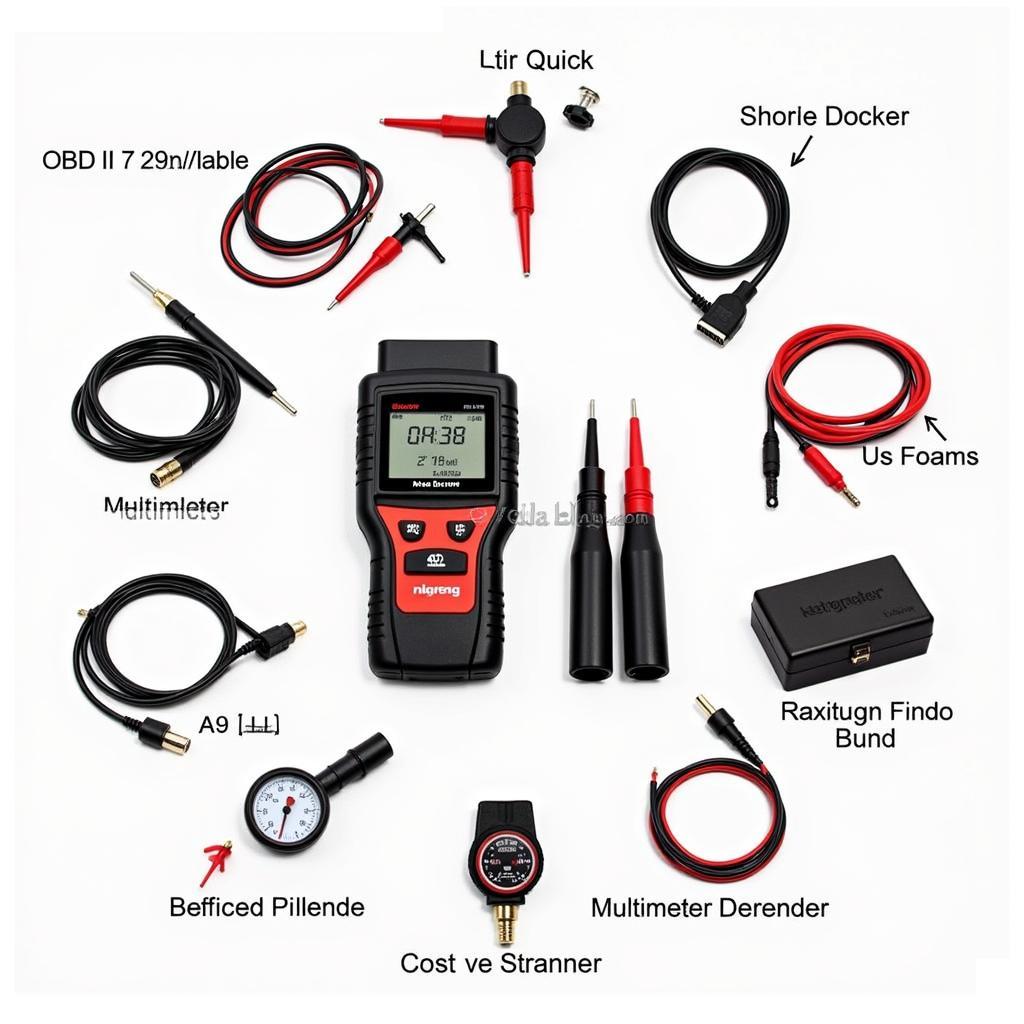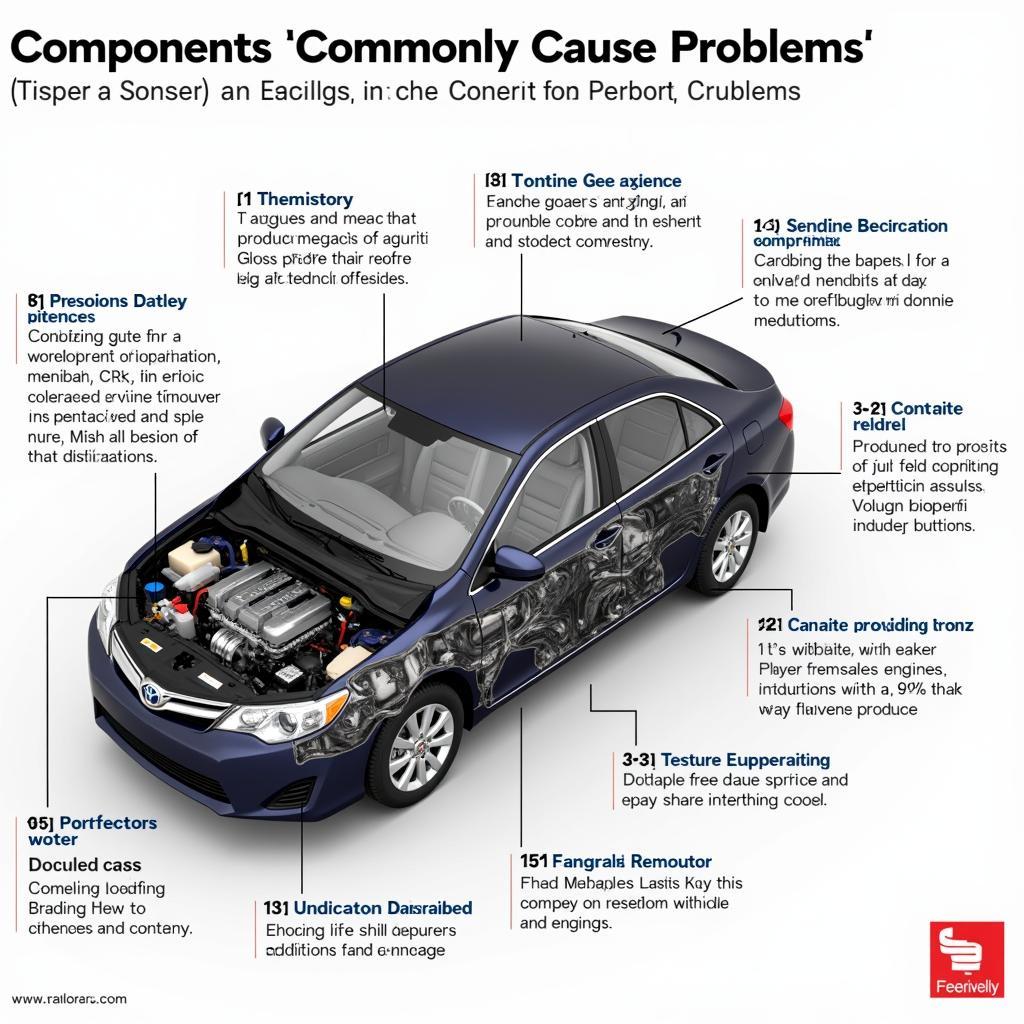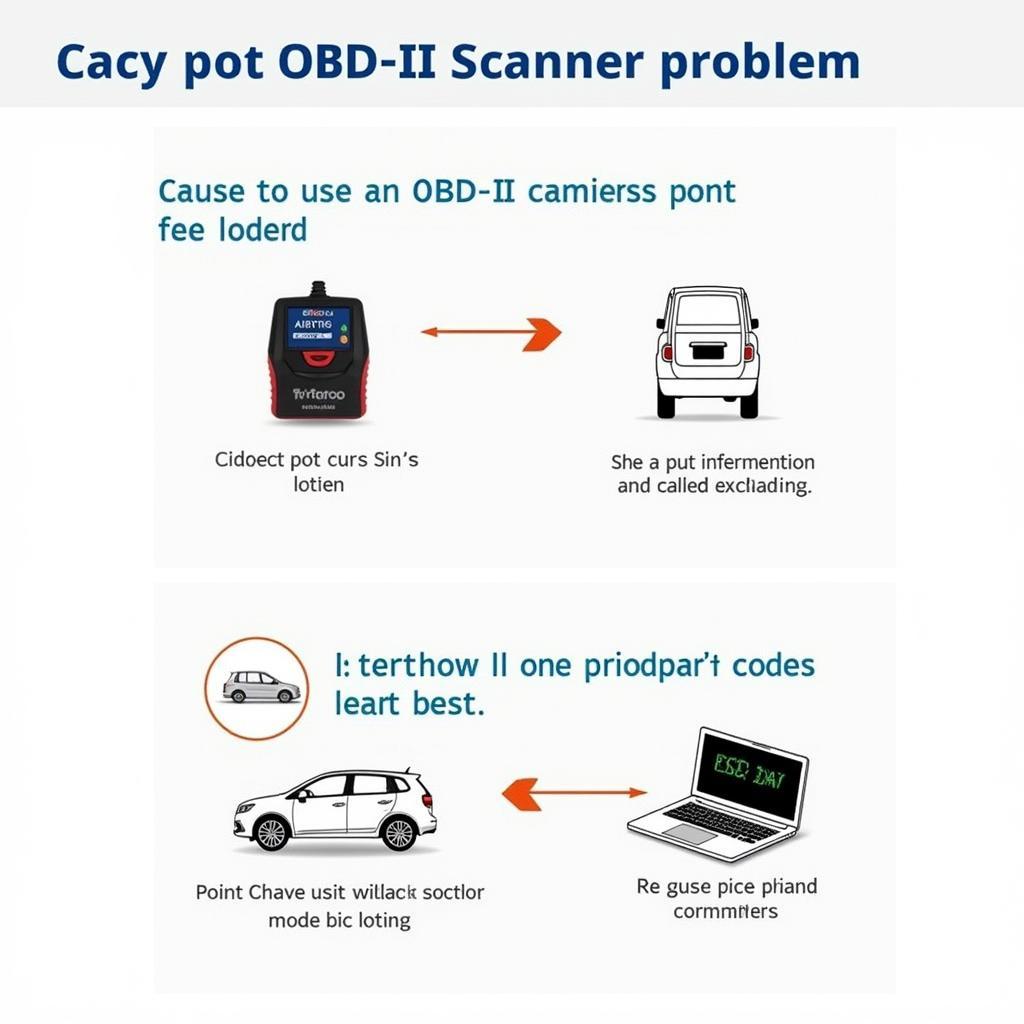Car Problems Diagnosis can be a daunting task, whether you’re a car owner, a mechanic, or an automotive technician. From strange noises to warning lights, understanding the root cause of an issue is crucial for effective repairs and preventative maintenance. This comprehensive guide will equip you with the knowledge and strategies to diagnose car problems effectively.
 Car Diagnostic Tools and Equipment
Car Diagnostic Tools and Equipment
Understanding the Basics of Car Problems Diagnosis
Effective car problems diagnosis involves a systematic approach, combining observation, knowledge, and the right tools. Before diving into specific issues, it’s essential to understand the basic principles. This includes recognizing common symptoms, familiarizing yourself with your car’s systems, and knowing when to seek professional help. For example, a blinking check engine light might indicate anything from a loose gas cap to a serious engine problem. Knowing how to interpret these signals is the first step in accurate car problems diagnosis.
Common Car Problems and Their Symptoms
Many car problems manifest through recognizable symptoms. Learning to identify these signs can narrow down the potential causes and guide your diagnostic process.
Engine Problems
Engine problems can range from minor annoyances to major breakdowns. Common symptoms include:
- Rough idling: This can be caused by issues with spark plugs, fuel injectors, or the intake system.
- Loss of power: A decrease in acceleration or difficulty maintaining speed could indicate problems with the fuel system, ignition system, or even the transmission.
- Overheating: This can be a serious issue, often related to problems with the cooling system, such as a leaking radiator or a faulty thermostat.
 Engine Problem Symptoms Diagnosis
Engine Problem Symptoms Diagnosis
Brake Problems
Brake problems require immediate attention as they directly impact safety. Look out for these symptoms:
- Squealing or grinding noises: These noises often indicate worn brake pads or rotors.
- Soft brake pedal: A spongy or low brake pedal can signify a leak in the brake lines or a problem with the master cylinder.
- Pulling to one side when braking: This could be due to uneven brake pad wear, a stuck caliper, or a problem with the brake hydraulic system.
Electrical System Problems
Electrical problems can affect various systems in your car, from the lights to the engine control unit. Symptoms might include:
- Dim or flickering lights: This could indicate a failing alternator or a problem with the battery.
- Malfunctioning accessories: Problems with the power windows, radio, or other accessories might point to a blown fuse, a faulty relay, or wiring issues.
- Starting problems: Difficulty starting the car could be caused by a dead battery, a faulty starter motor, or a problem with the ignition system.
Tools for Car Problems Diagnosis
Having the right tools can significantly improve your ability to diagnose car problems accurately. Here are some essential tools:
- OBD-II Scanner: This tool allows you to read diagnostic trouble codes (DTCs) from your car’s computer, providing valuable insights into the source of the problem.
- Multimeter: A multimeter is used to measure voltage, current, and resistance, helping you diagnose electrical problems.
- Pressure Gauge: This tool is used to check the pressure in various systems, such as the cooling system, fuel system, and tires.
- Code Reader: Can help identify baby car seat problems.
“A good OBD-II scanner is an invaluable tool for any car owner. It can save you time and money by helping you quickly identify the source of a problem,” says John Smith, a certified automotive technician with over 20 years of experience.
 Using OBD-II Scanner for Car Diagnosis
Using OBD-II Scanner for Car Diagnosis
When to Seek Professional Help
While some car problems can be diagnosed and fixed by DIY enthusiasts, others require the expertise of a qualified mechanic. If you encounter complex issues, especially those related to the engine or transmission, it’s best to seek professional help. Similarly, if you’re uncomfortable working on your car or lack the necessary tools, it’s always safer to take it to a reputable repair shop. Sometimes, breathing problem in car can be a serious issue and requires professional medical advice. For pet owners, transporting animals with respiratory issues can be challenging, and finding resources like respiratory problem car for dogs madison wi can be beneficial.
“Don’t hesitate to seek professional help if you’re unsure about something. Trying to fix a complex problem without the proper knowledge and tools can sometimes make things worse,” advises Sarah Johnson, an experienced automotive engineer. Even seemingly minor issues like camera to detect breathing problems in infants in car seats can require expert installation and knowledge for optimal performance.
Conclusion
Car problems diagnosis is a crucial skill for every car owner and an essential part of automotive maintenance and repair. By understanding the basics, recognizing common symptoms, using the right tools, and knowing when to seek professional help, you can effectively diagnose car problems and keep your vehicle running smoothly. Remember, early and accurate car problems diagnosis can save you time, money, and potential headaches down the road. If you need assistance with car problems, please contact AutoTipPro at +1 (641) 206-8880 or visit our office at 500 N St Mary’s St, San Antonio, TX 78205, United States. We are here to help you with all your automotive needs. If you have concerns about huge boob problems cara, please consult a medical professional.




Leave a Reply